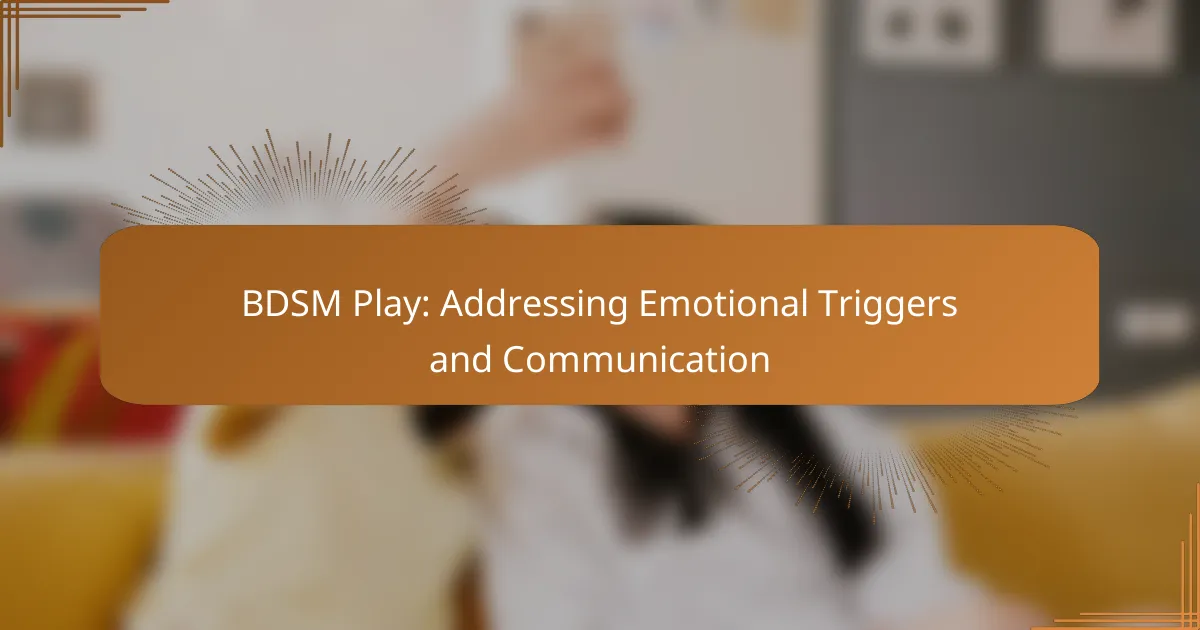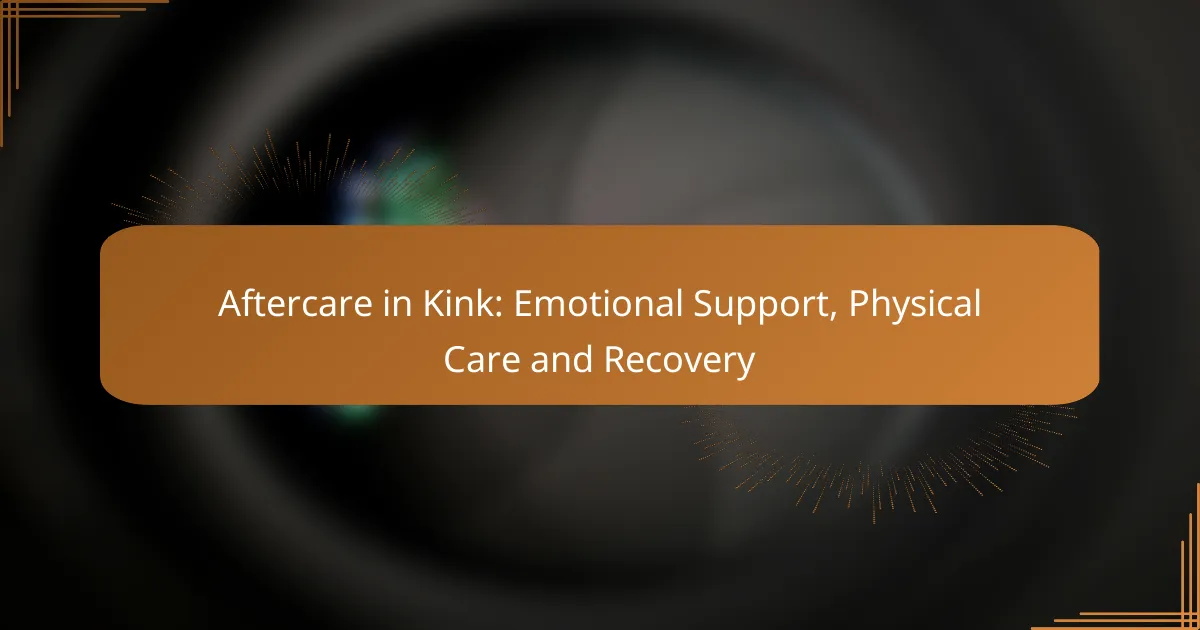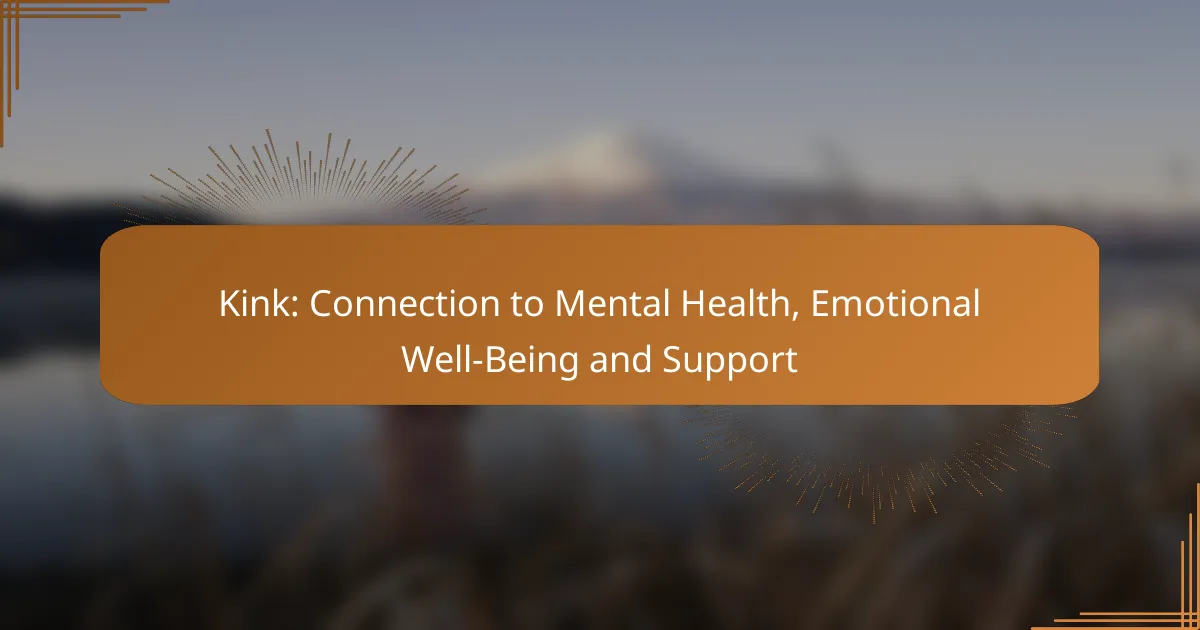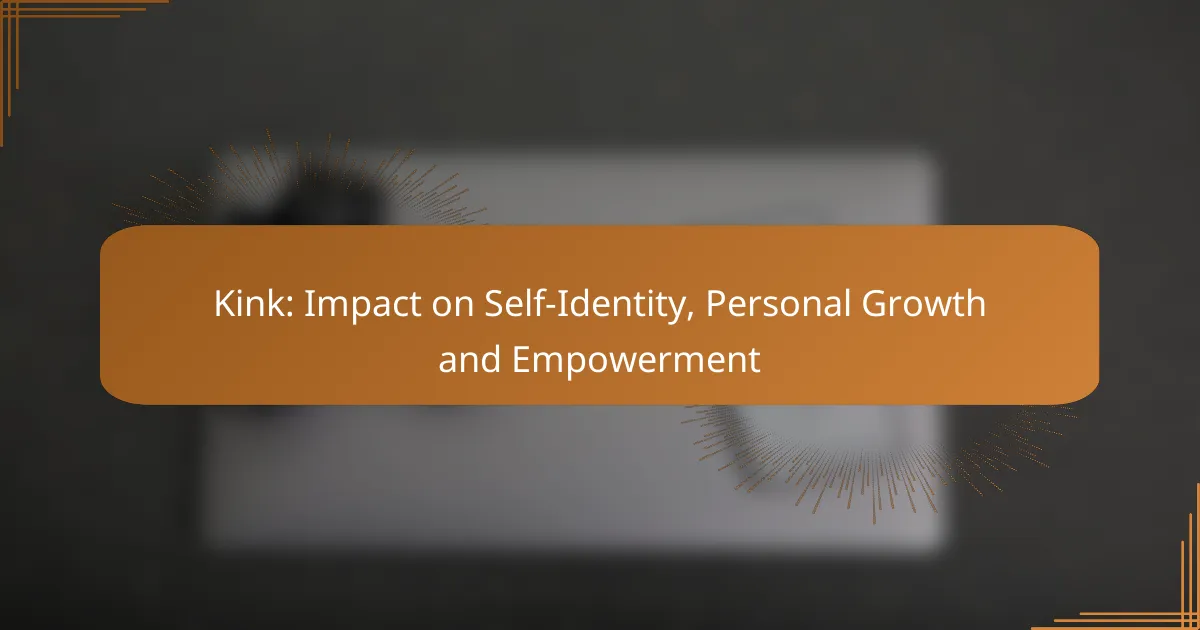In [censured] play, effective communication is vital for fostering safety, consent, and enjoyment among partners. By openly discussing desires, boundaries, and emotional triggers, individuals can create a trusting environment that enhances the experience. Recognizing and addressing these emotional triggers beforehand is essential for ensuring a safe and consensual atmosphere during play.
![How to Communicate Effectively in [censured] Play?](/wp-content/uploads/how-to-communicate-effectively-in-[censured]-play-1.webp)
How to Communicate Effectively in [censured] Play?
Effective communication in [censured] play is crucial for ensuring safety, consent, and enjoyment. It involves clear exchanges of desires, boundaries, and emotional triggers between partners to create a trusting environment.
Establishing Safe Words
Safe words are essential in [censured] play as they provide a clear signal for stopping or pausing activities. Typically, a safe word should be easy to remember and pronounce, often chosen from a list of simple words like “red” for stop and “yellow” for slow down.
Discuss and agree on safe words before engaging in any play. This ensures that both partners understand their meanings and can react promptly when needed. Regularly revisiting these words can reinforce their importance and keep communication open.
Active Listening Techniques
Active listening is vital in [censured] communication, as it ensures that both partners feel heard and understood. Techniques include maintaining eye contact, nodding, and paraphrasing what the other person has said to confirm understanding.
Encourage open dialogue by asking clarifying questions and providing feedback. This not only helps in addressing emotional triggers but also strengthens the connection between partners, making the experience more fulfilling.
Non-Verbal Communication Cues
Non-verbal communication plays a significant role in [censured], as physical cues can convey feelings and reactions that words may not express. Pay attention to body language, facial expressions, and even breathing patterns to gauge comfort levels during play.
Establishing a set of non-verbal signals can enhance communication, especially in scenes where verbal communication may be limited. For instance, a thumbs up can indicate enjoyment, while a hand raised can signal a need to pause or stop.
![What are Common Emotional Triggers in [censured]?](/wp-content/uploads/what-are-common-emotional-triggers-in-[censured]-2.webp)
What are Common Emotional Triggers in [censured]?
Common emotional triggers in [censured] can stem from past experiences, fears, and trust dynamics. Understanding these triggers is essential for ensuring a safe and consensual environment during play.
Past Trauma Responses
Individuals with past trauma may experience heightened emotional responses during [censured] activities. Triggers can include specific words, actions, or scenarios that remind them of their traumatic experiences. It is crucial to establish safe words and aftercare practices to help manage these responses effectively.
Communicating openly about past traumas before engaging in [censured] can help partners navigate potential triggers. Discussing boundaries and comfort levels can create a safer space for exploration.
Fear of Vulnerability
Many people fear vulnerability in [censured] due to the inherent power dynamics involved. This fear can manifest as anxiety or reluctance to engage fully in the experience. Acknowledging this fear is the first step toward overcoming it.
To address vulnerability, partners should foster an environment of trust and reassurance. Regular check-ins and affirmations can help individuals feel more secure in expressing their needs and limits.
Trust Issues
Trust issues can significantly impact [censured] play, as the practice often requires a high level of reliance on one another. Past betrayals or negative experiences can lead to hesitation in fully engaging with a partner. Building trust takes time and consistent communication.
Establishing clear agreements, practicing transparency, and maintaining open lines of communication can help mitigate trust concerns. Engaging in low-risk activities initially can also build confidence and trust over time.
![How to Address Emotional Triggers During [censured] Play?](/wp-content/uploads/how-to-address-emotional-triggers-during-[censured]-play-3.webp)
How to Address Emotional Triggers During [censured] Play?
Addressing emotional triggers during [censured] play involves open communication and mutual understanding between partners. Recognizing and discussing these triggers before engaging in scenes can enhance safety and enjoyment for everyone involved.
Pre-Play Discussions
Before starting any [censured] session, partners should engage in thorough discussions about their emotional triggers. This includes sharing past experiences that may affect their current play and identifying specific words or actions that could evoke strong reactions.
Utilizing a checklist can be beneficial during these discussions. Consider topics like safe words, limits, and emotional states to ensure both partners feel heard and understood.
Setting Boundaries
Establishing clear boundaries is crucial to prevent emotional distress during [censured] play. Partners should agree on what is acceptable and what is off-limits, including specific activities or phrases that may trigger negative emotions.
Using a simple framework like “soft limits” for activities that may be approached with caution and “hard limits” for those that are completely off-limits can help clarify expectations and enhance safety.
Post-Play Debriefing
After a [censured] session, a debriefing is essential to discuss feelings and experiences during play. This allows partners to process any emotional triggers that arose and reinforces trust and communication.
During the debrief, partners should share what worked well and what didn’t, focusing on emotional responses and any adjustments needed for future sessions. This practice can strengthen the relationship and improve future experiences.
![What Role Does Aftercare Play in [censured]?](/wp-content/uploads/what-role-does-aftercare-play-in-[censured]-4.webp)
What Role Does Aftercare Play in [censured]?
Aftercare is a crucial component of [censured], providing emotional and physical support following a scene. It helps participants process their experiences, ensuring they feel safe and cared for, which can mitigate any emotional triggers that may arise.
Importance of Emotional Support
Emotional support during aftercare helps partners reconnect and address any feelings that surfaced during the scene. This can include reassurance, validation of feelings, and open communication about the experience. Prioritizing emotional well-being fosters trust and strengthens the relationship.
Discussing feelings openly can prevent misunderstandings and help both partners feel secure. It’s essential to check in with each other about what was enjoyable or challenging, allowing for a deeper understanding of each other’s boundaries and desires.
Physical Comfort Techniques
Physical comfort techniques in aftercare can include cuddling, gentle touch, or providing a warm blanket. These actions help create a soothing environment that promotes relaxation and recovery. Simple gestures like offering a favorite drink or snack can also enhance comfort.
Consider the preferences of your partner; some may prefer quiet time, while others might enjoy engaging in light conversation. Tailoring physical comfort to individual needs can significantly improve the aftercare experience.
Aftercare Practices
Aftercare practices can vary widely but should always be personalized to the individuals involved. Common practices include discussing the scene, sharing feelings, and engaging in comforting activities like watching a movie or taking a warm bath together. Establishing a routine can help both partners feel more secure.
It’s beneficial to create a checklist of aftercare needs before a scene, ensuring both partners are aware of what to expect. This might include specific physical comforts, emotional check-ins, or even a set time to discuss the experience afterward. Being proactive about aftercare can enhance the overall [censured] experience.
![How to Build Trust in [censured] Relationships?](/wp-content/uploads/how-to-build-trust-in-[censured]-relationships-5.webp)
How to Build Trust in [censured] Relationships?
Building trust in [censured] relationships is essential for ensuring safety and emotional well-being. It involves open dialogue, mutual respect, and a commitment to understanding each other’s boundaries and needs.
Consistent Communication
Consistent communication is crucial in [censured] relationships to foster trust and safety. Regularly discussing feelings, desires, and boundaries helps both partners stay aligned and aware of any emotional triggers that may arise.
Establishing a routine for check-ins can be beneficial. For example, setting aside time weekly or after each session to talk about experiences can strengthen the connection and address any concerns promptly.
Transparency in Intentions
Being transparent about intentions is vital for building trust. Each partner should clearly express their desires and what they hope to achieve from the relationship or specific scenes.
For instance, if one partner wants to explore a new activity, they should discuss their motivations and any potential risks involved. This openness allows both partners to make informed decisions and feel secure in their choices.
Gradual Exploration of Limits
Gradually exploring limits helps partners build trust without overwhelming each other. Start with lighter activities and progressively introduce more intense experiences as comfort levels increase.
Using a system like “green, yellow, red” can help communicate comfort levels during play. Green indicates comfort, yellow suggests caution, and red means stop. This method ensures both partners feel safe and respected throughout their exploration.
![What Resources are Available for [censured] Education?](/wp-content/uploads/what-resources-are-available-for-[censured]-education-6.webp)
What Resources are Available for [censured] Education?
Numerous resources exist for those interested in [censured] education, ranging from books and online courses to workshops and community events. These resources help individuals and couples understand [censured] practices, safety, and emotional dynamics involved in play.
Books on [censured] Practices
Books are a foundational resource for learning about [censured] practices, offering insights into techniques, safety protocols, and psychological aspects. Titles such as “The New Topping Book” and “The New Bottoming Book” by Dossie Easton and Janet W. Hardy provide practical advice and personal anecdotes that can enhance understanding.
When selecting books, consider your specific interests, whether they are focused on [censured], discipline, or psychological elements. Look for updated editions to ensure you are receiving the latest information and perspectives.
Additionally, many online retailers and local bookstores offer curated lists of recommended readings, which can help you find reputable sources. Joining a local library can also provide access to a wider range of materials without the need for purchase.



